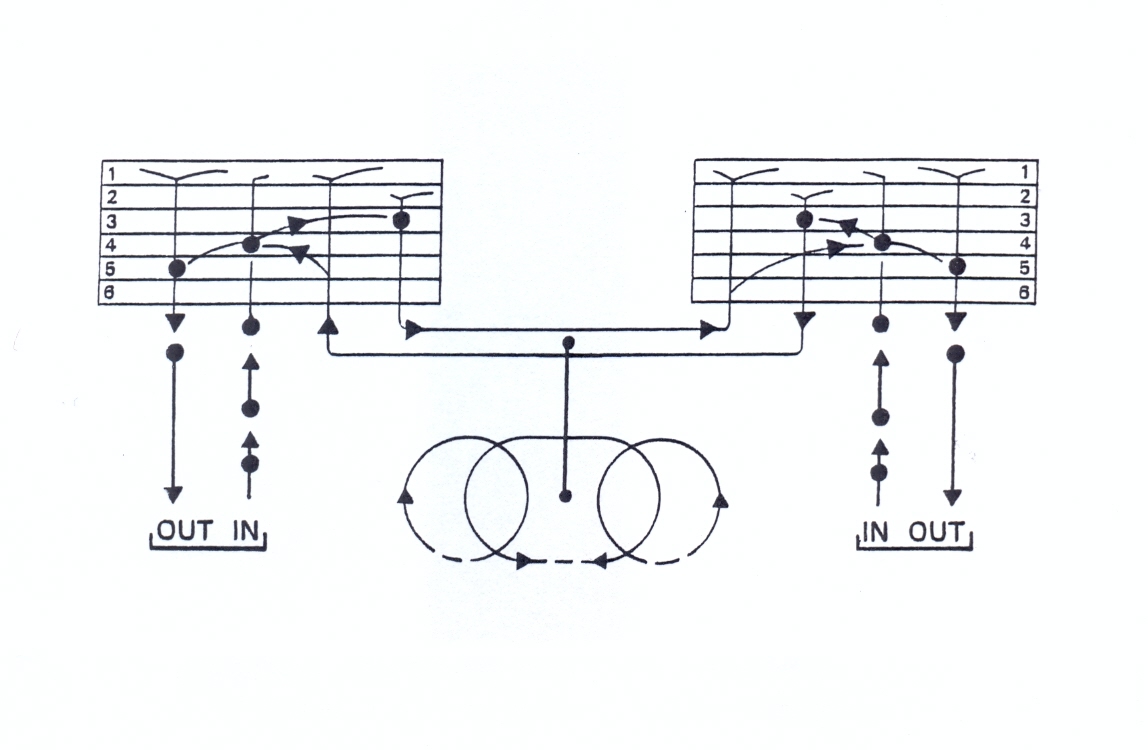The formal inversion theory of brain and mind suggests that there are structural similarities between certain basic brain forms characterised by left-right bicyclic formal inversion (arguably occurring in all bilaterian animals including the worm and humans) and certain basic mind forms characterised by formally inverted duality (most obviously occurring in humans) and that the former provide credible explanations for the latter.
White et al. (1986) data provide a strongly arguable two-perspective or two-truth ground-plan for all bilaterian brains that credibly explains the consistent formally inverted dualities of human mind forms across the arts and sciences, in subjects such as philosophy, logic, mathematics, physics, politics and ideology.
Formal Inversion in Minimal Model Bilaterian Brains. The middle part of Figure 1 is an ASE taste circuit. Signals flow in the direction of the arrows. ASE neurons connect with interneurons AIB and the signals change directions. Previously clockwise left signals travel anticlockwise and the inverse occurs on the other side. ASEL–AIBR connections are one-way and ASER–AIBL links are two-way or circular (indicated by a dotted box). AIB cells connect with motor neurons RIM and the signals change direction again − clockwise to anticlockwise on one side and the inverse on the other side. There are further one-way and two-way or circular connections. The latter are again indicated by a dotted box, but here represent one of four such cycles for graphic clarity. At the last stage, motor neurons connect with muscles so that the worm responds to the stimulus.
The lowermost part of Figure 1 summarises the circuit. Overall, signals in left brain cycles travel in inverse directions to signals in right brain cycles and there are further mutually inverted cyclic paths for the exchange of signals between the two sides. Broken-line sections in the summary are reminders that the signals travel via multiple neurons.
The uppermost part of Figure 1 summarises the probably associated formally inverted nature of gene expression in the ASE sensory neurons (Ortiz et al., 2006) which suggests one key direction for research.
Formal Inversion in Maximal Model Bilaterian Brains. Left-right bicyclic formal inversion seems conserved in humans, as in Figure 2, a severely simplified version of just one of the many ways in which the principle might be realised in the human brain. Numbered layers represent the human cerebral cortex. Layers 3 and 4 are main receivers of cortical and subcortical input and are here represented by cells in layer 4. Layers 2 and 3 provide main outputs to cortical destinations and are here represented by cells in layer 3. Layers 5 and 6 provide main outputs to subcortical destinations and are here represented by cells in layer 5.
Interested readers might wish to visit Google Books and insert the book title Suitable Heresies. This will enable them to read a 3 page introduction, a 3 page brief outline and a 27 page expanded outline of the theory. The 2009 book is the most complete description of the theory available but is not complete on worm connectivity in the amphid complex, referring as it does to all 13 sensory neuron pairs and to all 7 related interneuron pairs but to only 6 illustrative motor neuron pairs for simplicity. This deficiency has been corrected in the 2012 book, which now refers to 12 related motor neuron pairs and has had one neuron pair (previously wrongly included by me) deleted. If any interested worm scientist wishes to contact me by email, I shall be pleased to provide a complimentary copy of the 2012 book, which gives the most up-to-date overview of the perceived two-truth ground plan.
Figures
References
Ortiz CO, Etchberger JF, Posy SL, Frokjaer-Jensen C, Lockery S, Honog B, and Hobert O. (2006). Searching for neuronal left-right asymmetry: genomewide analysis of nematode receptor-type guanylyl cyclases. Genetics 173, 131-149. 
Rabey GP. (2009). Suitable heresies: a new scientific concept of brain and mind and its startling implications for our times. Troubador Publishing Ltd, Leicester, UK.
Rabey GP. (2012). The formal inversion theory of brain and mind: a short overview. Troubador Publishing Ltd, Leicester, UK.
White JG, Southgate E, Thomson JN, and Brenner S. (1986). The structure of the nervous system of the nematode Caenorhabditis elegans. Phil. Trans. R. Soc. London. B 314: 1-340. 

